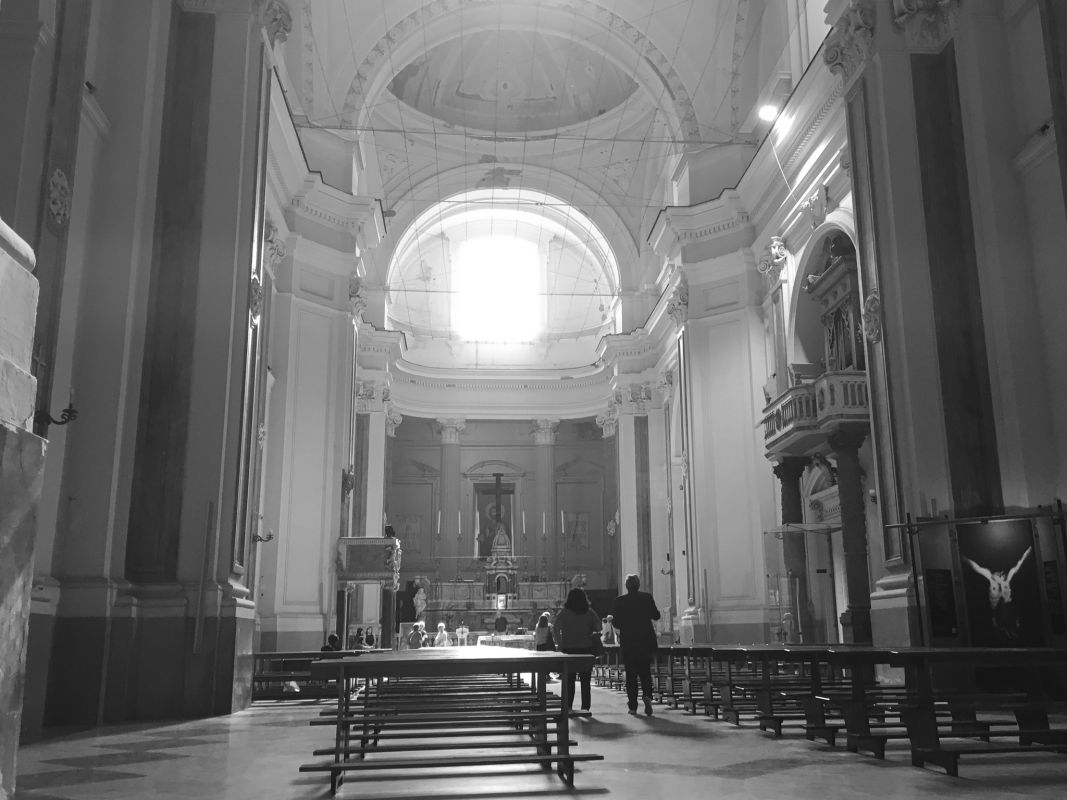Along via Duomo, stands the church of San Giorgio Maggiore, which is in all respects one of the most important testimonies of the different stratifications of eras in Naples.
The history of this religious building has its roots between the 4th and 5th centuries, when it was strongly desired by the bishop of Naples Severo. For this reason the church was called "la Severiana", although between the 9th and 10th centuries, by will of the people, it was named after Saint George, a Christian soldier and martyr. In 1640 the building was hit by a great fire which almost completely destroyed it. The Pious Opera Fathers, who took office in 1618, entrusted the reconstruction project to Cosimo Fanzago and elevated the church to the rank of parish. Fanzago, a great architect and sculptor of the seventeenth century, incorporated the medieval structure into the baroque one and, above all, reversed the ends of the church, moving the entrance to the north, where one enters today, and the new altar to the south. The ancient apse, corresponding to the current entrance, it is what remains of the original early Christian structure. The works continued slowly, so much so that Arcangelo Guglielmelli took over from Fanzago and continued his predecessor's project.
The facade of the church is the result of nineteenth-century works and is very austere from a decorative point of view. The interior, however, is very complex to decipher due to the presence of various historical eras that mix well, giving life to something hybrid. As soon as you enter, the visitor finds himself in what was once the apse of the early Christian basilica. This structure is characterized by an arch, with three arches resting on two columns with Corinthian capitals. The interior has only two naves of which the central one has three bays with as many domes.
The main altar, located in the new apse, houses the relics of San Severo. Built in 1786, it is the work of the architect Camillo Lionti, although what captures the observer's attention are the two statues on the sides, namely the Allegory of the Church and the Allegory of the Oration, created by Angelo Viva, a pupil of Giuseppe Sanmartino. These works are characterized by great virtuosity, especially the first with the female figure whose face is covered by a cloth with a wet effect. The drapery and body shapes seem to recall those of the famous Veiled Christ of the Sansevero Chapel.
Remaining in the apse area it is possible to admire two works by Alessio D'Elia, a follower of Francesco Solimena. These are San Severo resurrecting a dead man (on the right) and San Giorgio killing the dragon (on the left), whose canvas hides, through a movable frame, a previous fresco dating back to the 1640s by Aniello Falcone, depicting the same subject. The work in question was only recently brought to light during a restoration campaign and, thanks to the canvas above it, it is in a very good state of conservation, having kept its colors unaltered. The visitor will surely be pleasantly surprised by this little surprise.
Interesting from an artistic point of view is the third chapel on the left in which it is possible to observe a fresco triptych by a very young Solimena with Saints Nicholas and Anthony on the sides, while in the center we find a scene of angels ideally holding a wooden Crucifix from the first mid-eighteenth century, attributed to the sculptor Nicola Fumo. In the frescoes it is still possible to find a legacy from Luca Giordano, especially in the chiaroscuro, in the drapery and in the movements of the characters. As for the colors, the young Solimena seems to refer to the bright and elusive colors of Mattia Preti.
One of the most important attractions of the church of San Giorgio Maggiore is the chair of San Severo, placed against the third pillar on the right. It was once located in the apse area of the ancient early Christian building and it was thought that it was the one actually used by the Neapolitan bishop. However, several studies have shown that the work in question was created only in the medieval era with spoiled materials.
Information:
Free entry Monday through Saturday from 8:30 a.m. to noon and 5 p.m. to 8 p.m.




Comments powered by CComment